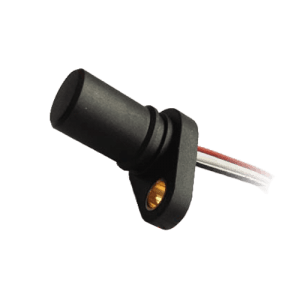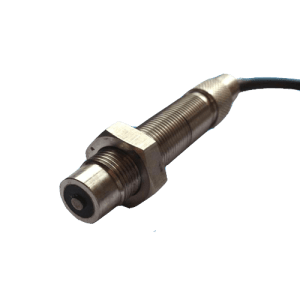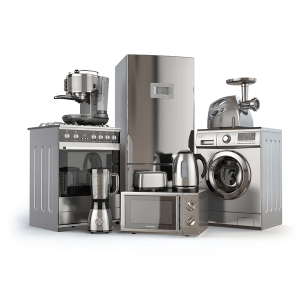MAGNETIC SENSORS





OUZHUO TECHNOLOGY specializes in providing a comprehensive range of Hall-effect and magnetic sensors tailored for effective control systems. We also offer various sensor packages designed to enhance versatility and compatibility with different interfaces. Furthermore, the company is known for its ability to create customized sensor products and services to meet specific and unique requirements.
These components use the Hall Effect, a fundamental principle in physics, to detect the presence of a magnetic field. When a magnetic field is applied or removed, these devices respond by toggling between on and off states, making them ideal for a wide range of applications.
Digital Hall ICs from Ouzhuo are known for their rapid response to magnetic field changes. This makes them suitable for applications requiring real-time data, such as speed detection in vehicles and proximity sensing in devices.
A unipolar Hall effect switch is a semiconductor device that responds to changes in magnetic fields by producing an electrical output. They response to One Pole of the magnet, S pole or N pole
Latch and Bipolar Hall ICs are designed to detect the presence of a magnetic field, N and S pole.They differ in terms of their output behavior, once a Latch Hall IC is triggered by a magnetic field, it remains in its changed state until it is reset or deactivated. While Bipolar Hall IC is not always latch.
Omnipolar Hall ICs are designed to respond to the presence of any magnetic field, regardless of its polarity. In other words, they can detect both North and South magnetic poles with equal sensitivity. This characteristic makes them incredibly adaptable for various applications.
These components use the Hall Effect, a fundamental principle in physics, to detect the presence of a magnetic field. When a magnetic field is applied or removed, these devices respond by toggling between on and off states, making them ideal for a wide range of applications.
Digital Hall ICs from Ouzhuo are known for their rapid response to magnetic field changes. This makes them suitable for applications requiring real-time data, such as speed detection in vehicles and proximity sensing in devices.
Linear Hall ICs are semiconductor devices that utilize the Hall effect principle to measure magnetic fields and provide a linear analog output proportional to the magnetic field strength.
Linear Hall, Programmable sensitivity range between 1 and 24mV/G, quiescent output voltage, extremely stable temperature performance
InSb, short for Indium Antimonide, is a semiconductor compound composed of indium (In) and antimony (Sb). Its crystalline structure makes it an ideal candidate for Hall effect sensors. InSb exhibits an exceptionally strong Hall effect, making it valuable for various applications
GaAs Hall sensors are semiconductor devices primarily composed of Gallium (Ga) and Arsenic (As). Their unique crystalline structure grants them exceptional properties for detecting magnetic fields with precision.










Their high sensitivity and low noise characteristics make InSb Hall elements ideal for measuring magnetic fields accurately.
Advantages of InSb Hall Elements
High Sensitivity
InSb Hall elements exhibit an exceptionally high sensitivity to both magnetic fields and electrical currents, making them indispensable in applications demanding precision.
Wide Temperature Range
One of the standout features of InSb Hall elements is their ability to function across a wide temperature range, from cryogenic temperatures to elevated temperatures.
Low Noise
These elements are known for their low noise characteristics, ensuring accurate measurements even in noisy environments.
GaAs Hall sensors are made from Gallium Arsenide, while InSb Hall elements are composed of Indium Antimonide. They have distinct material properties and applications.
What sets GaAs Hall sensors apart are their inherent advantages:
High Sensitivity
GaAs Hall sensors exhibit remarkable sensitivity to magnetic fields, making them ideal for applications demanding precise measurements.
Fast Response Time
These sensors offer rapid response times, ensuring real-time data acquisition in various applications.
Low Power Consumption
GaAs Hall sensors are energy-efficient, extending battery life in portable devices.
Current Sensing: Linear Hall ICs can measure the magnetic field generated by current-carrying conductors, making them useful for current sensing in applications like motor control and power management.
Position Sensing: They are employed to detect the position of objects in applications such as automotive throttle position sensing and industrial machinery.
Speed Measurement: Linear Hall ICs can be used to measure the speed of rotating objects in combination with magnetic encoder discs.
Angular Position Sensing: In applications like rotary encoders, Linear Hall ICs help determine the angular position of a rotating object.
Part number | Type | Operating Voltage | Operating Temp | Output Current | Operating Point (Bop) | Release Point (Brp) | Average supply current | Available packages |
OH34/ OH34N/ OH44 | Unipolar | 4~24V | -40~125℃ | 25mA | <16mT >-16mT | >2mT <-2mT | 5mA | SOT23, TO-92S |
OH37/ OH137 | Unipolar | 4.5~ 24V | -40~ 85℃ | 25mA | <18mT | >2mT | 5mA | SOT23, TO-92S |
OH4S/OH4N/OH401 | Unipolar | 4~ 30V | -40~125℃ | 50mA | <20mT >-20mT | >2mT <-2mT | 3mA | SOT23 |
OH543/OH443/OH443R | Unipolar | 3.8~ 30V | -40~150℃ | 50mA | <20mT | >2mT | 5mA | SOT89, TO-92S |
OH44EW/OH44E | Unipolar | 4.5~ 24V | -40~150℃ | 50mA | <20mT | >2mT | 5mA | SOT89, TO-92S |
OH3141L /OH44L | Unipolar | 4~ 30V | -40~150℃ | 50mA | <15mT | >3mT | 5mA | TO-92S |
OH3144 | Unipolar | 4~ 24V | -40~125℃ | 25mA | <16mT | >2mT | <6mA | TO-92S |
OH3020 | Unipolar | 4.5~ 24V | -40~125℃ | 25mA | <16mT | >3mT | 5mA | TO-92S |
OH9432 | Unipolar | 2.8–24V | -40~125℃ | 30mA | <6.5mT | >1mT | 1.5mA | TO-92S |
OH137A0/ OH17 | Bipolar | 4.5~24V | -20~ 85℃ | 25mA | <10mT | >-10mT | 5mA | TO-92S |
OH41/ OH41A | Latch | 4.5~ 24V | -40~150℃ | 25mA | >3mT | <-3mT | 4mA | TO-92S |
OH513/ OH413/ OH13 | Latch | 4~30V | -40~150℃ | 50mA | <8mT | >-8mT | 5mA | SOT23-3, SOT89, TO-92S |
OH41F | Latch | 4~ 30V | -40~150℃ | 50mA | <7mT | >-7mT | 5mA | TO-92S |
OH920 | Latch | 3.5~ 20V | -40~125℃ | 25mA | <4mT | >-4mT | 3mA | SOT23 |
OH921 | Latch | 3.5~20V | -40~125℃ | 25mA | <4mT | >-4mT | 3mA | TO-92S |
OH3172X, OH1881 | Latch | 4.5~ 24V | -40~125℃ | 25mA | <6mT | >-6mT | 5mA | TO-92S |
OH4913 | Omnipolar | 2.4-6V | -40~ 85℃ | <2mA | +/-3.5mT | +/-2.6mT | Awake:2mA, Sleep:1.9μA | TO-92S |
OH9213 | Omnipolar | 1.65-6V | -40~125℃ | <2mA | +/-3.5mT | +/-2.6mT | Awake(typ):2mA, Sleep( typ):1.9μA | DFN2*2-3, SOT23, T-SOT-23-3 |
OH9245 | Omnipolar | 3.5-24V | -40~150℃ | 25mA | +/-3.5mT | +/-2mT | No sleep, typ:2mA | SOT23, TO-92 |
OH9253 | Omnipolar, No Sleep | 2.5-6V | -40~125℃ | 25mA | +/-3mT | +/-2.5mT | No sleep, typ:2.6mA | TO-92 |
OH9218 | Micropower | 1.8-4.5V | -40~150℃ | <2mA | +/-6mT | +/-4.5mT | Max:2.0mA | SOT23, TO-92 |